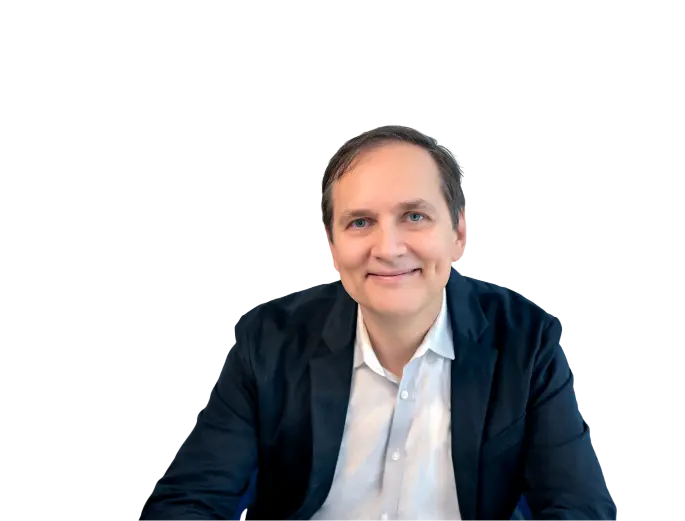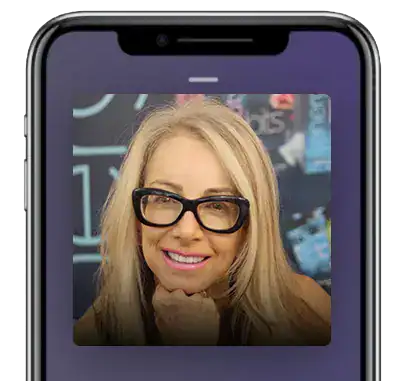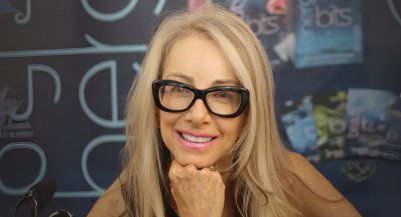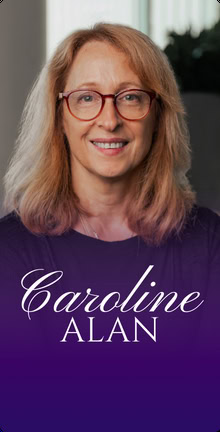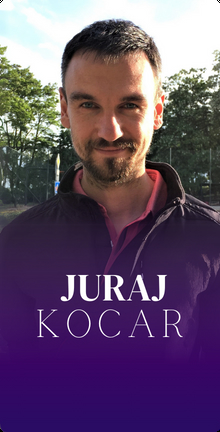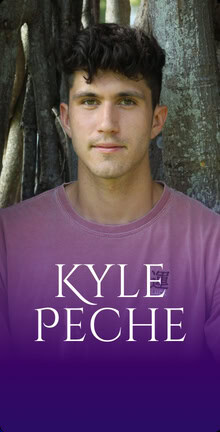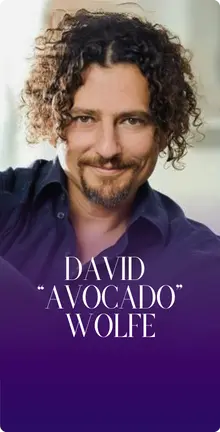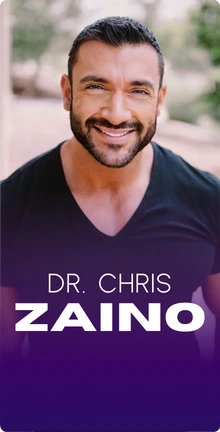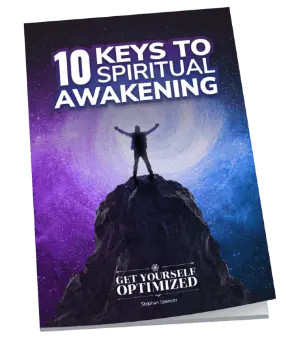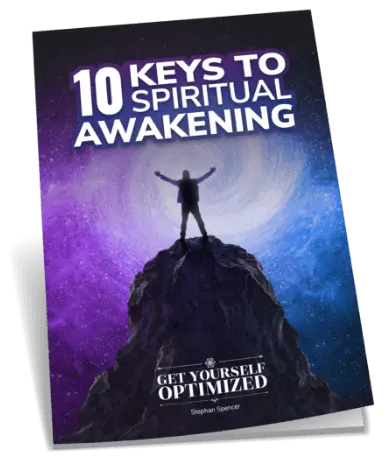In this Episode
- [02:37]Catharine Arnston recounts her personal journey, highlighting her sister’s breast cancer recovery and her own path into plant-based nutrition.
- [08:10]Catharine relays powerful anecdotes of enhanced energy and well-being attributed to algae tablets.
- [17:24]Catharine outlines actionable protocols for incorporating algae before and after biohacking practices, including cold plunges and workouts.
- [23:40]Catharine emphasizes her dedication to delivering medical-grade algae through premium-quality sources.
- [24:53]Catharine delves into the critical role of mitochondrial health in supporting energy, longevity, and vitality.
- [31:56]Catharine addresses the difficulties in sourcing pure algae and underscores the necessity of low-heat drying methods to preserve nutrient integrity.
- [43:25]Catharine explores the synergistic effects of combining algae with other biohacking tools like red light therapy, cryotherapy, and sauna use.
- [46:50]Catharine presents real-life testimonials from customers who’ve experienced transformative health outcomes with her products.
- [50:41]Catharine provides information on where to purchase her products and how to use them for different health goals, and closes with an inspiring message about algae’s powerful potential to elevate health and change lives.
Catharine, it’s so great to have you on the show.
Thank you, Stephan, so glad to be here. This is going to be a really exciting ride for your community, because they’re going to learn things about algae, using algae nutrition for their wellness, longevity, and brain health that they absolutely, I can promise, never knew, and the science has been there for almost 100 years. I’m going to lift the lid and tell you all these great things that you need to know.
That’s awesome. Looking forward to it. First off, let’s start with your origin story, because somehow you got down the rabbit hole of algae and mitochondrial health and so forth. What got you into it? Did you have some sort of health crisis or some sort of issue with a loved one that got you doing all this research?
Yes, and I think you’ll find most people in the biohacking, wellness, longevity space had a personal experience, and then, when trying to solve the issue, found that a solution was not acceptable or even available, and that’s exactly what happened to me. I’m actually Canadian by birth, although I’ve lived in Boston, Massachusetts, for 35 years. I’m a recent transplant to Miami, where it’s a lot warmer than Boston in the winter, but I mentioned the Canada thing because all my family is still in Canada. I did all my education in Canada. I have an MBA. I studied international business, nothing to do with nutrition.
Then, 17 years ago, my younger sister, whom I’m very close to, developed breast cancer. But first of all, she has completely healed, so we celebrate her being cancer-free every year. In fact, I just had a FaceTime with her yesterday, and we’re getting the next girls’ trip organized. But as she was preparing for her chemotherapy, her oncologist, who is a cancer specialist, advised her that she needed to change her diet to an alkaline diet, because it would be important for her healing. This advice wasn’t coming from her neighbor or her yoga instructor. It was coming from her oncologist, who is a cancer expert.
An alkaline diet is mostly a plant-based diet. Chlorophyll and phytonutrients that are found in plants have been documented for decades as ways to boost, improve, and strengthen your immune system.
They didn’t tell exactly what a plant-based diet was or what it did for her. My baby sister called me, not that I knew anything about nutrition. Remember, I was an MBA. I knew nothing about biochemistry. I know you have a master’s in that, but I’m a very good researcher. In fact, I recently got my PhD. I said, “I don’t know what this stuff is, but I will find out.” I did, and you could, too.
You go online, and it turns out that an alkaline diet was mostly a plant-based diet, and it turns out that chlorophyll and phytonutrients that are found in plants have been documented for decades as ways to boost, improve, and strengthen your immune system. I think that was number one.
Number two, I discovered that there was a German scientist by the name of Otto Warburg who won the Nobel Prize in the 30s for discovering that cancer, or frankly, any disease, cannot exist in cells if they are slightly alkaline. Having an alkaline diet would help those cells keep the cancer from growing into the other cells. I have to believe this is the other reason why my sister’s oncologist wanted her to have an alkaline diet.
I did the research for her, found foods to eat and not to eat. She did go through chemo, she completely healed, but in the process, I started learning about plant-based nutrition, alkaline diets. I discovered that algae are the most alkaline food in the world. As I was teaching people about the importance of eating plant-based, alkaline foods, I found out it was too hard for most people.
They either didn’t like vegetables, or it was too much work, or their kids and husbands wouldn’t eat them, or they went bad too quickly, or they gave them gas. When I found that algae was the most alkaline food in the world, 100,000 studies documented all the health benefits of it. It’s an agricultural crop in Asia. That’s a multi-billion-dollar agricultural crop. Yes, algae is a food, not a supplement, and it’s been endorsed by international agencies like NASA for 50 years.
They say algae has 1000 times more nutrition than any other food in the world, and the United Nations has endorsed it as the answer to world hunger, because it has the highest protein in the world. But the best part of all is that this algae, which we grow in Taiwan, comes in tiny little tablets about the size of a baby aspirin, and each of these tablets has the same nutrition as an entire plate of vegetables.
Algae is a food, not a supplement, and it has been endorsed by international agencies, such as NASA, for over 50 years.
We recommend at least 10 of each tablet to start you off, 30 if you have a health condition. Most people, I will say, swallow the tablets. I like to chew them. You can have the nutrition of plants, all the alkalinity of plants, all the healing properties of plants, without any work, any effort. You can swallow them or you can chew them, and you get it all instantly in seconds—no gas, no waste, and it replaces most of your other supplements.
When I discovered that algae came in, these tablets gave people the most concentrated nutrition in the world, all science documented, and the only problem with it was that A, people outside of Asia didn’t know about it. And B, even if they knew about it, the quality that was available outside of Asia was low.
Fifteen years ago, I drew a line in the sand and decided I was going to bring algae to America. I was going to give them a safe and pure version of it, and I wanted to help people understand the science behind it and how effortless it was to take, because it’s beneficial for everyone, from children to pets, teenagers, and even grandparents.
That’s how I became “the algae gal,” which is my sort of moniker, and I like it, because algae is for everyone, just like the girl next door is for everyone. Algae will change your life, and that’s not an empty promise. It will absolutely, absolutely simplify your life in terms of getting the nutrition that you need, and it will resolve or correct or prevent virtually any health condition that you encounter, particularly as you get into your 40s and 50s.
What are some of the case studies or anecdotal stories that you can share with our listeners about improvements in life and health that have occurred? By the way, all disclaimers apply. This is not medical advice. Consult your doctor.
Well, maybe they’re quite different. The benefits you get from what we’re going to talk about are spirulina and chlorella, which are both microalgae. But first, I wanted to give you a slight overview of algae in general. Then we’ll get into the two different types of microalgae, spirulina and chlorella, and then what they do, and then the anecdotal stories and the scientific papers. Because when you talk about 100,000 studies, that’s a big number, though I can pull from just about anything.
Algae is its own food category. It’s technically not a plant, nor is it a fruit or an animal; yet, it was the first life on Earth, almost 4 billion years ago, a fact documented in science.
Algae is its own food category. It’s technically not a plant, nor is it a fruit or an animal; yet, it was the first life on Earth, almost 4 billion years ago, all of which is documented in science. Now, there are two main categories of algae, macroalgae and microalgae. We’re going to be talking about microalgae, but macroalgae, just to let you know, is that stringy stuff that you see washing up on shore, also known as seaweed, dulse, or kelp. It’s so good for you because it has lots of fiber, has iodine because it’s from the ocean, but has virtually zero nutrition: high fiber, zero nutrition.
Microalgae, which are what we’re talking about today, are completely opposite. It either has zero fiber. Spirulina has zero fiber because it’s actually a bacterium. It’s not even a plant. Chlorella does have a bit of fiber, but it is the most nutrient-dense food in the universe. Like I said, NASA says one gram of algae has 1000 times more nutrition than any other fruit or vegetable. Unlike macroalgae, the seaweed stuff, which is only in the sea, is why it’s called seaweed.
Microalgae are everywhere. It’s in the lakes, the rivers, the streams, your aquarium, the soil, and it’s harvested as a food in Asia. I’m going to show you two. These are pictures of algae farms. They’re grown in fresh water. Yes, there’s algae in the ocean, but whether you buy algae tablets from us, Target or Whole Foods, I can almost promise you 99% of it is grown in fresh water, not the ocean.
This is a spirulina farm, and this is a chlorella farm. Do you need to know why this is important? Because your body recognizes food way better than it recognizes supplements. Supplements are made from extracts. They use high heat, and very often they’re made of synthetic materials. It’s hard for your body to absorb that nutrition because algae is a food, your body recognizes it, and because spirulina in particular is a bacteria, no cell for your body to break down to get access to the nutrients, it’s 99% bioavailable. We can dig into that later on—very concentrated food.
Now, what we do, and most people do, is we take the algae that’s grown in the water, then we dry it into a powder, and then we press it into tablets. We call our tablets “bits,” because they’re bits of food. There’s nothing else in there, just 100% spirulina or 100% chlorella. We’ll talk about what distinguishes us from other algae companies. But the main one is that we do not use high heat to dry it. The reason why this is critical is that there are nutrients.
When we talk about the mitochondria health, which we will in a few minutes, there are nutrients found in spirulina and chlorella, but mostly spirulina, that have been proven, tens of thousands of studies, proven to reduce inflammation in the mitochondria, improve your ATP, reduce the chance of Alzheimer’s heart disease, and cancer. These are proven studies, and yet this nutrient found in algae, which is called superoxide dismutase, is an enzyme.
Growing algae isn’t like growing tomatoes or broccoli. It’s more like making wine. The angle of the sun and the production processes are critical in determining the value and quality that you receive.
If you dry enzymes at a temperature over 114, you deactivate them. All the less expensive, lower quality algae, they cut corners to get to market. They use high heat. Buying a great car, getting a great deal on it, and lifting the hood, and there’s no engine, so it looks great, but it doesn’t perform. Ours does. I just want to give you that, because people need to understand, growing algae isn’t like growing tomatoes or broccoli. It’s more like making wine. The angle of the sun and the production processes are very, very critical to determine the value and the quality that you’re getting.
Back to those tablets. They’re so concentrated that one tablet has the same nutrition as an entire plate of vegetables. It’s almost a pound of vegetables. Those of you who either don’t like vegetables, if you’re traveling and can’t get vegetables, or they give you gas, or you find that you’re throwing most of your vegetables out, I have the solution for you. It’s algae tablets. One tablet gives you the same nutrition as a virtually pound of those vegetables.
A quick question on this, for someone interested in getting their vegetable kind of nutrition from algae, because they’re intrigued by what you’re saying. What are they likely to spend in terms of getting enough nutrients from the bits? How much does that cost per day?
We sell them in canisters and boxes of single pouches, but the best value is these large bags that have 1000 tablets in them. Now, just using that quote from NASA, I determined that one bag of 1000 tablets has the same nutrition as 551 pounds of vegetables. Put another way, that’s about 30 grocery carts of vegetables right here in that bag. Now we have a discount code for your listeners: GETOPTIMIZED. We’ll talk about that later on at the end.
A bag is usually $130, and with your 20% off discount code, it brings the price down to $104. We recommend a starter dosage of 10 spirulina tablets. This is a starter. There’s no upper limit. We have NHL players who take 75 before each game. I have plenty more than that myself. Thirty tablets would be the therapeutic dose if you’re trying to correct or prevent a health condition. But 10 tablets will get you started.

Now, using your discount code when you buy the large bag, 10 tablets cost you, drum roll, $1 a day, and a bag would last you three months. It’s very affordable nutrition, and it gives you 40 vitamins and minerals, the highest protein in the world, three times more than steak. It’s 64% protein. The same goes for chlorella; it’s 60% protein and contains more chlorophyll.
This really has 500 times more chlorophyll than arugula, 25 times more than liquid chlorophyll, and it still has 25 or 45 vitamins and minerals. But they behave differently in your body, and we’ll go through those differences. It’s very affordable nutrition. Most people take it well. As we discuss spirulina, you’ll find out that it’s an energizing algae. It gives you physical energy. It generates more cellular energy. It improves your focus and your mental energy, which is why we call it “energy bits.”
It satisfies your hunger. It’s also zero carbs, so it’s great for intermittent fasting. It’s ketogenic. Most people are tired and hungry during the morning and the afternoon before a workout, or in the two o’clock slump, or even at lunch. This is kind of like your daytime algae, spirulina. We call ours energy bits, because that’s when you want energy and chlorella. Again, we’ll get into this in greater detail. This pulls out toxins, all heavy metals, lead, mercury, radiation, aluminum, alcohol, pesticides, lactic acid, and it is a healing algae.
It helps your cells regenerate, and because your body goes through a detox repair cycle when you’re sleeping, we generally recommend the chlorella before bed. You can take it at any time of day, if you prefer, but it’s especially beneficial after a workout, after drinking, or after meals, as it aids digestion and elimination. It has fiber, so it helps with your gut biome. This is really an evening algae.
Spirulina is an energizing algae. It provides you with physical energy and enhances your focus and mental clarity.
However, the same principle applies; if you took 10 tablets a day for your immune health, it would cost you $1 a day. So now, for $2 a day, you can get the nourishment, energy, focus, and mitochondrial support that you need and aren’t getting because some of the nutrients in here aren’t found in any other food in the entire universe.
You can get all the immune-building, detoxing, digestion, and elimination benefits, and also help with sleep, from the chlorella. Also, it replaces other things. Spirulina has so many nutrients in it, it can replace fish oil, a collagen powder, because it has more collagen than collagen powder, biotin, a coQ10, a few other vegetables, nutrients, or supplements. It saves you money and time, and saves the clutter on your countertop.
I tell people that taking supplements is like listening to individual soloists, which can be fine. However, you don’t get the synergies that you get from an orchestra like the Boston Symphony Orchestra, where I used to live. LG gives you the orchestra, all the harmonies, all the synergies, all the up leveling, all the cross up leveling, whether it’s with enzymes or coenzymes or factors or cofactors, they’re all there. It’s a much more efficient way to get nutrition than taking individual supplements.
For $1 a day, you’ll get what you need. If you have a health condition, as I said, we encourage you to take 30, but remember, this is food. It’s not a drug, it’s not a prescription, it’s not a supplement. You may take it because you want energy for the day, but you’re going to find your skin clears up, your digestion improves, and your sleep improves, depending on what you’re taking. Your mental health improves, and your hair gets better. This is all my hair. I don’t take any Botox. This is all my skin. I’ll be 70.
That’s seven zero next year. The sample size is one. This stuff works, and it’s very affordable. When people ask me what my main sort of biohacks or things that I follow myself, or that I have found work best to help people with their longevity and health, almost all of them are either free or very affordable, and they’re things like sleep. Sleep doesn’t cost you anything. Movement doesn’t cost you anything. Go for a walk, breathe, and drink water. Those are all free.
Spirulina fuels your mitochondria. It’s not a stimulant; it’s cellular energy. No crash, no drama. Just clean, focused power. Share on XAlgae at $1 a day, it’s almost as free. You can’t even buy a coffee for $3, so you can nourish your body efficiently, effectively, and quickly with very concentrated food, all in these little tiny tablets. Like I said, they’re good for children, pets, grandparents, and teenagers. You can swallow them or chew them. Put them in a smoothie, put them in a trail mix. Kids love them because they turn their tongue green, like mine. I just chewed one. It’s good for the family. No drug interactions, nothing. Not a single negative outcome of using algae, spirulina or chlorella after 75 years, it’s pretty remarkable.
That’s awesome. So now you consume how many of those tablets per day?
Well, I do eat food. People say, “Oh, you live on intermittent fasting pretty regularly.” All I do is intermittent fast. I’ll have my tea and the spirulina and chlorella. I like to take both in the morning and up till about maybe one or two o’clock, and then I’ll probably have either a big lunch or a light lunch. Then, if I have a light lunch, I’ll have dinner; if I have a big lunch, I’ll have just a very light snack in the evening. I’m down to one and a half meals. I end up consuming probably about 100 a day.
I have had that much every day for 15 to 16 years. They’re really easy to travel with. They come in individual little pouches that you can throw in your gym bag or your travel bag. I’m just looking for some here, like there are 30 tablets in a pouch. They also come in canisters for your countertop. Then, when you get the canisters that come with a bag inside, and they have a nice little opening that you can just shake the tablets out, and then you refill the canister with the bag, with so much science backing up all of the various benefits of spirulina and chlorella.
I personally have recorded 200 teaching videos. They’re only about a minute and a half, and I’ve written lots of papers. I speak all over the country, mostly about mitochondrial health, because ultimately, that’s what determines your longevity and your ability to stay mobile, mentally and physically. The nutrients found in spirulina and chlorella are unique and help you accomplish that with no fanfare, no drama. There’s no drama with algae.
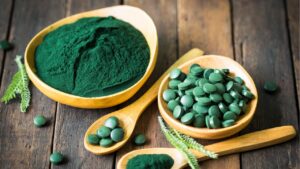
In fact, even though spirulina does give you energy, it’s energy at the cellular level. It’s not a stimulus. They are like caffeine, chemicals, or sugar, and you get a burst of energy and then a crash. It’s sort of like putting paper on a fire. Spirulina has nutrients in here that go straight to the mitochondria, which generate all of your cellular energy, and it’s at the cellular level, no bursts, no drama, no crash. It’s like putting a log on the fire, and we’ll talk about how critical these mitochondria are for generating ATP, because your body can’t store ATP, whatever you’re doing in the moment. Let’s say you took 20 spirulina tablets, and then you went to do a workout, you had the best workout.
Whether you’re running, you’ll run further or longer, and you won’t even notice it. If you’re lifting weights, you’ll lift more or lift longer, and you won’t even notice it, because it’s at the cellular level. If you just take the 20 tablets and you sit on that sofa, you might not feel much, except you’ll be more awake, you’ll be more alert. Maybe you’ll find that movie on Netflix that you actually really want to watch. Or if you’re a brain surgeon or driving a truck, you’ll just have more focus. That’s pretty sweet because as you get older, we’ll talk about this later on, your mitochondria get damaged, and they die.
Since they generate cellular energy, and since your brain has the most mitochondria per cell, 2 million per cell in your brain, the first thing that goes for people as they get older is their focus, their ability to have really great brain power. It’s like having the lights go out in your building. You know, in a building, you can’t do any work if you don’t have any lights on. Well, in your body, your mitochondria are your lights. They’re also your electricity.
As you get older, and you’ll find out why in a minute, your mitochondria get damaged. It’s like having the lights go out in your building, and they go out in your brain too. But the good thing is, we can turn them back on, but we have to get your mitochondria functioning again. It works with this nutrient called superoxide dismutase that’s only found in spirulina and, to a lesser extent, in chlorella.
In your body, your mitochondria are your lights. They’re also your electricity.
Nowhere else in the entire universe has superoxide dismutase. I’m like, “Santa, I’ve got this great stuff that is proven in 25,000 studies to protect you and help you. But nobody knows that you can find it in algae, but only if it has not been exposed to high heat.” That’s the kicker.
I’m from iHerb and the Nutrex Hawaii, Hawaiian spirulina. Is that heat-treated?
I honestly don’t know, but I will tell you about Hawaiian. I never beat up on any other brand, but remember I mentioned algae. Growing algae is like growing wine, and just like wine, it’s affected by the angle of the sun as well as the production processes. For whatever reason, Taiwan has the most concentrated nutrition of any algae, and part of it’s because of the location and the angle of the sun.
By the way, I plan to grow it here in Florida, because I drew a line across the globe from Taiwan and got to Florida. Florida has exactly the same climate as Taiwan, so the spirulina from there is comparable. I’ve tried pretty much everybody’s algae, and it’s just milder. It doesn’t have the same pop that you get from ours. I attribute that to partly the angle of the sun, and also partly the production processes that we use so carefully.
Mother Nature created algae for us. I can’t take credit for algae. I can take credit for making sure that it’s the highest quality that allows us to preserve the nutrients so that you get maximum value. I can’t say anything negative about new tricks. I just know that Hawaii doesn’t seem to have the same level of concentrated sun power that you get from algae grown in Taiwan.
I’m curious, why aren’t you selling on sites like iHerb?
We’re really medical-grade algae because of the high quality, as I explained. That means we’re higher priced, and we also conduct third-party lab tests here in the US. We’ve done everything we can. We only sell through our website, doctors’ offices, longevity clinics, biohacking clinics, and spas. We’re hand-selecting what we feel are the highest-end, high-value, and high-quality options. We only want to be on really, really high-quality websites because we’re the gold standard for quality.
Your brain has the most mitochondria per cell. When mitochondria die, the lights go out in your brain. Spirulina helps turn the lights back on. Share on XWe’re not trying to just be everywhere; we’re preserving. We want to be where more help is provided to consumers when they’re making their purchases, and you can get that from concierge medical services, biohacking clinics, or longevity clinics. We haven’t reached out to them. I don’t think that because we’re not even interested in Whole Foods, it’s just that we’re a different kind of brand. We’re really a medical-grade product, and we make no apologies for that. If people are looking for those high-quality, high-integrity, third-party lab-proven benefits, that’s us. We’re not looking for a mass reach.
Understood. Okay, so let’s delve into some of the science behind this, and also, for our listeners who are not that geeky. Also, we want to be accessible. Explain, please, for our listener, mitochondrial health, why the mitochondria are so important to our energy, our longevity, our overall health, our immune system and all that. How do ATP production and the aging process all fit together?
Great question, and I’m glad you asked it, because I was in the same boat as some of your listeners who don’t know anything about mitochondria. I knew nothing about mitochondria. I knew nothing about how my body worked, and most of us don’t. We know how our phone works. We know how our car works. It’s all a big mystery. When it becomes a mystery, it can also be very frightening. You may default to, maybe, taking prescription drugs once you have a health situation.
What I’m going to try to do is help you understand a little bit how your body works and why the mitochondria are so important, what they are, and why we want to always eat and do anything to keep our mitochondria healthy, because when you keep them healthy, they’re going to keep you healthy. So, a little science lesson in your cells, all of your mitochondria are found in all of your cells, except your blood, actually. In your cells, you have a bunch of stuff. You have your nucleus, and these little peanut-shaped things that are your mitochondria.
If you don’t have enough energy, nothing in your body works very well.
Now, again, remember, your mitochondria are what generate what’s called cellular energy, also known as ATP. When I talk about cellular energy, we’re not talking about just energy to run to the grocery store or have a great run. This is what your body needs to function on all levels. It’s your neurotransmitters in your brain, it’s your lymphatic system, it’s your heartbeat, your lungs, your digestion, your elimination, everything requires energy, and if you don’t have enough energy, nothing in your body works very well.
The way I describe it is like this: let’s say you’re having a dinner party and you forgot to get dessert. You had one cookie, and you shared it with all your guests, giving each of them just one bite. Well, they’re not gonna be terribly happy. When you have enough cellular energy being generated, and this happens at the markers, like starts dropping at 30-40, and by 50, it’s pretty significant, you lose a lot of mitochondria, and I’ll tell you why.
The ones that you have are struggling, and in many cases, they’re damaged anyway. There’s not enough energy for any part of your body to function optimally. It’s like having that one cookie that all of your guests have to share. This is why you have difficulty recovering from any illness, or why maybe you’re more susceptible to illness. That’s what’s going on with your mitochondria after the age of 30. By the way, they start declining.
At 30, you start seeing loss in your muscles, in your skin. You don’t have to be 40 or 50, although that’s when most chronic conditions kick in; the damage starts at 30. What’s going on? Well, your mitochondria, as I mentioned, generate this cellular energy. But the problem is, your mitochondria have their own DNA. Remember, I pointed out the DNA in your cell. That’s your nuclear DNA. Your mitochondria have their own DNA, and it’s located exactly inside where all that cellular energy is being produced, which is called ATP.
What people don’t know is that a byproduct of ATP is free radicals. We know, though, that a free radical is a molecule that has an unpaired electron. Mother Nature loves balance. That unpaired electron that molecule will steal another electron from a neighboring molecule to balance itself out, but then that leaves that molecule with one unpaired electron. This is how tissue damage occurs.
Algae will change your life, and that's not an empty promise. Share on XNow, the good news is there are these things called antioxidants, and they have extra electrons that they give away to things like free radicals to neutralize them so they don’t have to steal from each other, sort of like the kid who comes to school with extra lunches for his friends.
Antioxidants are generally the way to remove and reduce the damage from free radicals. The problem is, your mitochondria are the only cells in your body. You can’t really see so much from this picture. I’ll show you another picture. Your mitochondria are the only cells in your body that have two membranes. They have the regular membrane, which is a lipid membrane that all your cells have, but your mitochondria have the second inner membrane, and virtually no antioxidants can get in there.
Even though you have all these free radicals being released as a byproduct of ATP, which are damaging the DNA of your mitochondria, which causes the mitochondria to die, there are no free antioxidants that can get in there, except a handful. The few hands that can get in there include chlorophyll. Algae have the highest chlorophyll in the world. Algae has the highest glutathione in the world, and this fabulous one that’s not available anywhere else in the entire food world universe, called superoxide dismutase, also known as SOD.
Those antioxidants can get into the intermediate brain and neutralize the free radicals so that they don’t damage the mitochondria. This saves your mitochondria. This allows your mitochondria to grow again. This allows your mitochondria to generate cellular energy again, so that things in your body, whether they were on a downhill spiral, can reverse, because your mitochondria, just like all of your other cells, can and will grow back given the correct conditions.
Now I’m going to get a little geek here to tell you exactly what happens when the mitochondria get damaged, and why this thing called superoxide dismutase, and also another nutrient found in spirulina, which is the blue pigment called phycocyanin, are so critical for your mitochondria’s health. Let’s go back to that little picture of the mitochondria with that inner membrane.
In that inner membrane, the actual cellular energy is created through something called the electron transport chain. If you’ve ever seen a relay race, you know there’s a runner who passes a baton to the next runner, and then the next runner runs with the baton, and they try to cross the finish line. Well, it’s sort of similar to the way that your ATP cellular energy is created, except instead of having runners, you have these molecules. Instead of passing a baton, they pass electrons.
The way to make your electron transport chain work efficiently is to keep these molecules, like the runners, close to one another, so they can pass the electrons, which means you get efficient ATP being produced at the end. By the way, there’s this little helper molecule called cytochrome c. We’ll talk about that in a minute. The blue pigment in spirulina speeds up the cytochrome c molecule, which is the helper molecule, to speed up the passage of those electrons, which is one of the reasons why spirulina gives you energy, because it has that blue helper molecule.
The pigment that helps the helper molecule. That’s how it’s supposed to work when you have healthy mitochondria; those little molecules, the little runners, are close to one another. They could pass the baton, which they are the electrons, and you generate rapid, consistent and effective ATP. This is another picture of those molecules in the electron transport chain, CO, which are tightly bound.
This is a healthy mitochondria, really close so they can pass the electrons. Here’s that diagram again. Here is a picture of a damaged mitochondria. Because when you have a damaged mitochondria, what happens is it expands.
Two things happen now: those molecules that are trying to pass the electrons from one another are further apart from one another. It’s like the runner in that relay race can’t make the pass. It’s like, effectively dropping the baton. The electrons get dropped. What happens? You can’t finish the race. You don’t get as much ATP because they have not completed the circuit. That’s number one.
Number two, those electrons that get dropped don’t disappear. They leak out into the rest of the mitochondria, where they become—drumroll—free radicals. What does that do? It causes more damage to the mitochondria, which causes them to expand even more, which makes it even more difficult to generate ATP because they’re further and further apart from each other. Eventually, the mitochondria explode.
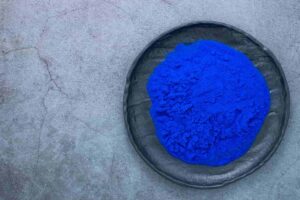
That’s called necrosis, and then all of those free radicals bleed out to the rest of the MO, to the cell, and damage the rest of the cell, damage the rest of the mitochondria. There’s less oxygen, and they become acidic. So, here’s a picture of a healthy molecule, healthy mitochondria, and a damaged one. See all those big blank spaces. That’s where those molecules have been leaked out and caused damage.
The key is to stop that damage, and the most important way to do that is with an antioxidant called superoxide dismutase. Now, why is this so important? Well, those free radicals that you see leaking out, they’re a very special type of free radical. They’re called superoxide, and they are the most damaging free radical in your entire body. What makes them so damaging? Remember, I said free radicals usually have one unpaired electron. Superoxide has three unpaired electrons, so it’s three times as damaging.
This stuff, called superoxide dismutase, also known as SOD, is made for you from the moment you’re born, just like your body makes you hormones, it makes you melatonin. You’ve got a treasure trove of things that help your body function properly, including superoxide dismutase. However, at the age of 30, the production of your superoxide dismutase starts slowing down, just like for women, hormones, estrogen, and melatonin, slow down. By 40, you have virtually no superoxide days any longer, so all the protection that it offered you until the age of 40 is gone, and by 50, you’re in trouble.
This is exactly when the disease kicks in. I believe it’s because this is exactly when your body stops producing superoxide dismutase. Now that you’re free, your mitochondria are bombarded with free radicals. They’re killing the mitochondria. They’re damaging the mitochondria. Whatever cellular energy you have is diminished significantly, and it just keeps plummeting, particularly in your brain.
Spirulina is known as a blue-green alga. Chlorella is a type of green algae.
This is why Alzheimer’s, dementia, forgetfulness, depression, and other conditions are more common in women, because your brain has the most mitochondria. When the damage occurs, the first thing to go is your brain. Now, most scientists don’t know that spirulina has the highest concentration of superoxide dismutase in the world. Just so you know, it converts those free radicals into harmless water and oxygen. It’s like having a big golf umbrella.
If you’ve been out on a big rainstorm, whether you golf or not, you pop open that big golf umbrella, and you could get five people under there. You haven’t stopped the rain, but you stopped getting wet. With superoxide dismutase, it does not stop the free radicals. They’re a natural byproduct of ATP production, but what they do is they stop the damage of the free radicals by turning them into water and oxygen. But when you’re 40 and 50, that production is gone.
Even though the free radicals have always been there, they are no longer being removed. Also, one of the things that keeps your cells healthy is keeping them alkaline and oxygen and water help do that. That’s why, when you have an alkaline diet, algae are the most alkaline food in the world. A, you are protecting your mitochondria. B, you’re making your ATP production more efficient. And C, you’re keeping disease out of the cell for a number of reasons. It’s pretty powerful.
Now, as I mentioned, superoxide dismutase is an enzyme. It’s also an antioxidant, but it’s also an enzyme. If you get the less expensive algae, I can promise you that they use high heat to dry them to get them to market quickly. We don’t use high heat. Our superoxide dismutase works and is effective. I can tell you some anecdotal as well as some scientific proof of how this works, but it’s very, very effective. I recommend spirulina.
Chlorella does have superoxide dismutase. It has about two-thirds less. Spirulina is really your mitochondria health algae, that’s why I call it your brain food as well, because your brain has the most mitochondria. But I recommend the spirulina, because it has higher superoxide dismutase and also spirulina is what’s called a cyanobacterium. It’s not even a plant, it’s a bacterium.
Why that’s important is that there’s nothing for your body to break down to get access to the superoxide dismutase or the other nutrients. It’s absorbed instantly and goes where it needs to go, which is to your mitochondria and every other part of your body. It’s pretty amazing stuff.
Now you mentioned cytochrome c earlier. What did you want to share about that specifically?
Yes, that’s another reason I love spirulina so much. It has a blue pigment. Spirulina is known as a blue-green algae. Chlorella is known as a green algae. That’s because chlorella only has one pigment called chlorophyll, which is why it’s called chlorella, because of the high chlorophyll content. Spirulina has two pigments, chlorophyll, but it also has the blue one, which is called phycocyanin. Now, this phycocyanin does not exist anywhere else in nature. It’s way better than methylene blue.
Methylene blue is on everyone’s hit list these days, and that’s fine. It’s good stuff, but this makes phyco methylene blue look like a warm-up act. By the way, methylene blue is produced, and phycocyanin is natural. What’s so special about phycocyanin? Well, remember that picture I showed you with the little helper molecule of cytochrome c? In a healthy cell, phycocyanin speeds up the cytochrome c molecule.
This is one of the reasons why spirulina gives you energy. It’s like having a Tesla. This is another sort of graphic. It’s like having a Tesla speeding up the process of those electrons so that you can get more ATP energy. That’s what happens in a healthy cell. But in an unhealthy cell, the blue pigment phycocyanin detects that it’s an unhealthy cell that would be a cancer cell, or what’s called a senescent cell, which is a cell that’s subdivided so much that it’s really dead inside, but it won’t kill itself.
In an unhealthy cell, the phycocyanin knows that it’s a cancer or a senescent cell, and instead of speeding up the cytochrome c molecule, it ejects it, which triggers something called caspases, which triggers something called apoptosis, which is known as healthy cell death. Now, the interesting thing about cancer cells is that they don’t know they’re sick.
You have a process called apoptosis, or autophagy, which is the cleaning of the cell, and apoptosis is a healthy cell death. It’s sort of like when someone’s worked at a company for 50 years, it’s time to retire. They know it’s time to retire, so they give all their great projects to the next generation and wish them well, and they exit well in a healthy cell. If the cell is healthy and it’s been around for a while, and it knows it’s time to go, it goes through this apoptosis process, which is programmed cell death, and basically it divides itself up into many little cells. There’s no inflammation.
All the good DNA, all the good stuff, is handed out to all the cells to become new cells. It takes a retirement. That’s how healthy cells kill themselves. Unhealthy cells, like cancer cells, are not aware that they’re unhealthy, and so they cannot go through this process called apoptosis, which is healthy cell death.
The fact that this blue phycocyanin can trigger apoptosis, which kills cancer cells, and the cancer chemotherapy companies put phycocyanin in many of their their their chemotherapy treatments, and they measure whether the chemotherapy is working by how much cytochrome c molecule are is in your plasma, because they know that’s that shows that the cell has died. This is why I call spirulina intelligent food.
You have to be intelligent to take it, and it knows what to do in your body. If you have a healthy cell, it speeds up your ATP cell production. Pretty cool. If it’s an unhealthy cell, it says you’re out of here. That’s pretty cool, too. But once again, phycocyanin and I have the scientific papers that prove it is deactivated and down by high heat; you need to be sure you’re getting spirulina that has not been exposed to high heat, that there’s a significant drop off after it’s been heated to 114 degrees.
You could get frozen spirulina or fresh spirulina, because they also have not been exposed to high heat, but ours, or, you know, if there are some other high-quality algae companies out there. Well, I can help more people. I’ve learned a great deal more about the science now than I knew when we first started. But I built the company just to be helpful to people. I knew the enzymes were important. I didn’t realize how important this one called superoxide dismutase was, literally a game changer for people.
Taking chlorella every day is like giving your body a shower from the inside.
I’m proud that we took the right high road every step along the way, and we always will. I can only talk about what we do and can assure the quality to people. If you had any doubt about the phycocyanin, here’s an actual lab test. They put cancer cells purple in a petri dish, and then they put phycocyanin in the petri dish, and then over 24 hours, they took pictures. I can send you this scientific paper where this report was held, and you can see that the cancer cells literally disappeared after 24 hours with the phycocyanin in the petri dish.
Yeah, that’s great. That actually brings me to another question, and that is, how would somebody treat themselves as a science experiment? Because there are so many biohacks out there, you could do red light therapy, you could do cold plunges, all these different supplementations and the wearables and everything, right?
You’re not sure which thing worked and which didn’t. How do you know? Like, do I need to spend a lot of money and get myself a hyperbaric chamber for hyperbaric oxygen therapy, or do I need to spend just a few dollars and get some of these little tablets?
We work with so many of the biohacking companies, and I think very highly of them, but not everyone can afford a hyperbaric chamber or a sauna or a cold plunge, or they don’t have the time to go to the clinics where those services are offered. It’s a trip there and a trip back, and it’s inconvenient. But for hyperbaric or, let’s say, coal plunges or cryotherapy, these work really, really well. In cryo or a cold plunge, your body thinks it’s dying because it’s exposed to cold, so all the blood rushes to the core of your body.
If you’ve taken spirulina before the cold plunge, you know, 10, 15, 20, 30, as much as you like. While the blood is in your core, it’s nourishing your organs. It’s nourishing everything really well. Then, when you step out, it also acts as a vasodilator. It takes all of that great blood flow out to your extremities and carries all these great nutrients. It’s a great pre-work hack to take, whether it’s red light, sauna, cold plunge, hyperbaric, anything. After you step out, you want the chlorella, because chlorella acts as the cleanup crew.
As I said, it pulls out toxins, heavy metals, glyphosate, pesticides, anything that shouldn’t be there, alcohol, and lactic acid. When you are killing cells, whether you go through autophagy or apoptosis, there’s junk that is released and or if you’re on eight GLP-1, or you’re losing weight because your body stores most of your toxins in your fat, you definitely need to be taking this after biohack or any kind of sport or in before bed, because you don’t want those toxins circulating around.
Taking chlorella every day is like giving your body a shower from the inside, and it also stimulates what’s called peristalsis, which is known as a bowel movement. Spirulina does not do that. This is very nourishing. This is nourishment, but there are toxins and junk in it. I say you’ve got to get rid of that junk in your trunk because it sits in your colon. This is why colon cancer is on the rise right now. Many people are eating processed foods, or they’re stressed, or they’re eating too much dairy, which causes constipation.
This gives you fiber for your gut biome, and it stimulates peristalsis. Does everything that vegetables should do, but if you don’t like vegetables, you don’t have access to them; this is a much more efficient, faster way to get the same results.
Whether you’re doing it at a biohack or on your own, the spirulina before anything, this, because it gets absorbed so quickly, because it’s a bacteria, but definitely take the chlorella afterwards, because it will eliminate anything that has been released, so it doesn’t get reabsorbed. You don’t get rid of what I call, again, the junk in your trunk. It’s like having a garbage truck parked in front of your house permanently. That’s not very much fun for anyone.
Yeah, but what are some of the symptoms or some of the chronic things that would ameliorate from taking your energy bits?
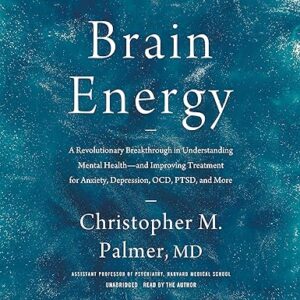
We’ve done a number of clinical trials ourselves for Alzheimer’s, post-traumatic stress disorder, and brain health. There’s a great book by Dr. Chris Palmer called Brain Energy, which was published a couple of years ago. He talks about how every single mental health condition ultimately stems from damaged mitochondria. If we can improve your mitochondria, you will improve your focus, dementia, and Alzheimer’s, and you don’t have to wait long.
I mean, we’ve had customers write us who had Alzheimer’s. They couldn’t figure out how to work the microwave, and they couldn’t remember. They couldn’t remember their home address, but within 24 hours, their brain functioned again. If you have kids on the spectrum with autism, their focus improves, and you do not have to wait long, maybe a day. By the way, give kids you’re thinking of like adults would take anywhere from 15 minutes to 30 minutes; give children one and a half to one of their age. If they’re 10, give them 5 to 10 a day. If they’re 12, give them 6 to 12 a day, until they can get up to the 15 or adult portion, and then keep them taking it every single day. This stuff is replacing food. It replaces supplements.
Your grocery bill will go down. We had a speaking engagement, and we had a woman who was 87. We don’t ask for these testimonials, by the way, they just come to us. She had very low energy. She couldn’t sleep. She was only sleeping at one-hour intervals. She was incontinent. She started taking both of them, and within a week, she said she was now sleeping through the evening, and she was no longer incontinent. She had so much energy, she was only eating one meal a day.
Her grocery bill has gone down, and she said, “Today, for example, I got up at six and went for a three-mile walk. I took my great-grandson to school, and I visited a friend at the nursing home. I came home, cleaned out my garage and started painting my kitchen, and at five o’clock I had dinner. Oh, and by the way, I joined 87 Street CrossFit.” You gotta love these stories. We have had people send us their lab tests where they were given two weeks to live, literally, and they started taking high doses of both of the algae.
Then they would send us weeks of their numbers going down, until cancer was completely gone. Announcement: I am not a medical professional. I do not want you to pay attention to your medical professional’s advice. I’m just telling you that I’m sharing information that I have read about in science and that I’ve learned anecdotally about. There are other things that you can also do, and it’s food. It’s not like you’re going to hurt yourself.
Warning: You may feel better, you may live longer. It will add so much in so many ways, and you don’t have to change anything else if you don’t want to, just start taking it, because we can’t help you. If I can’t get it into your body, you may take it for energy, but you’ll find that, as I mentioned, maybe your sleep improves, or maybe you’ll take it for your mitochondrial health. Lots of people want to know for sure, so they get some blood tests or maybe bone tests.
They’ve wanted to know whether they’re building their bones. Yes, it does. Your bones are actually stronger when you increase protein and minerals. It’s not calcium, it’s minerals. Calcium actually makes your bones brittle, but it’s where calcium is stored. Lots of people do their tests.
Then they start taking the medication again, if they’re trying to correct the condition again, it’s the 30th day, and then they go and have some blood tests done, or another bone scan. 100% of the time, they see improvements. I’ve had some tests done. My biological age is 30, and my chronological age is almost, well, soon to be 70, so there you go.
Congratulations on that. That’s awesome. Well, I know we’re out of time, so if you just want to share your website, and you know if you’re active on any particular social platforms, what that would be and where they can learn more from you and buy your product.
Absolutely well. Our website is energybits.com. Get a discount code for 20% off anything we have. We actually have two spirulina brands. One’s called ENERGYbits®, and we found women didn’t like the blue packaging, so we made a second one called BEAUTYbits®. They’re exactly the same. Chlorella is a detoxifying algae. Then we have a fourth brand called vitality bits, which is a blend of the two tablets, two types of algae. Everything, whatever size you get, it all works, not on subscriptions, just on the single purchases.
I just want to mention there’s not a single contraindication or negative of any kind with spirulina—newborns, children, every single pet, everybody can take spirulina. Now, chlorella is a detoxing algae, and sometimes you might have some detox effects, which could include anything like headaches, breakouts or maybe some stomach distress. It won’t last forever, but it does occur. Now, if you have any concerns about that, I would encourage you to just go to Amazon and buy a single pouch of 30 tablets.
They’re only $6, make sure you’re okay with it, and then come back to the website, because you’ll get a much better value when you buy them from our website using your GETOPTIMIZED discount code. Remember, each bag has the same nutrition as 551 pounds of vegetables, and if you took 10 a day, it would only cost you $1 a day. We’re also very active on social media, Instagram, and Facebook. Our handle is at energybits, so it’s pretty easy to remember. We write a full blog post every month.
We have a very active customer care team. We love answering questions. We’re here to really help people. I’d like to leave you with this one thought: think about 10, 15 years ago, you didn’t know about collagen powder, probably didn’t know about bone broth or Kiwa, or a lot of these other nutrients and food groups that have existed for centuries in other countries. Well, the same thing with algae. It’s a multi-billion-dollar agricultural crop in Asia. It’s as big as the beef industry is here. You just don’t know about it because it’s not grown here, and until I started doing this, nobody told you about it or what it does for you at a nutritional healing level. So algae isn’t new. It’s just new to you.
I wrote this little booklet called the Algae Love Story. We now provide this information on our website to help you understand that algae have been around for approximately 4 billion years. It’s just like love, it will love your body back to health. Try not to think of it as pond scum. It’s just something that you have not experienced or known about. We’re here to help you learn about it so that you can benefit from it, because it’s going to save the world. I’m convinced of that.
Awesome, well, thank you for doing your part to help save the world, Catharine, and thank you, listener, for being a part of the tribe and saving the world with your tribe as well. We’ll catch you in the next episode and have a great week. Make it a great week. I’m your host. Stephan Spencer, signing off.
Important Links
Connect with Catharine Arnston
Books
Businesses/Organizations
People

